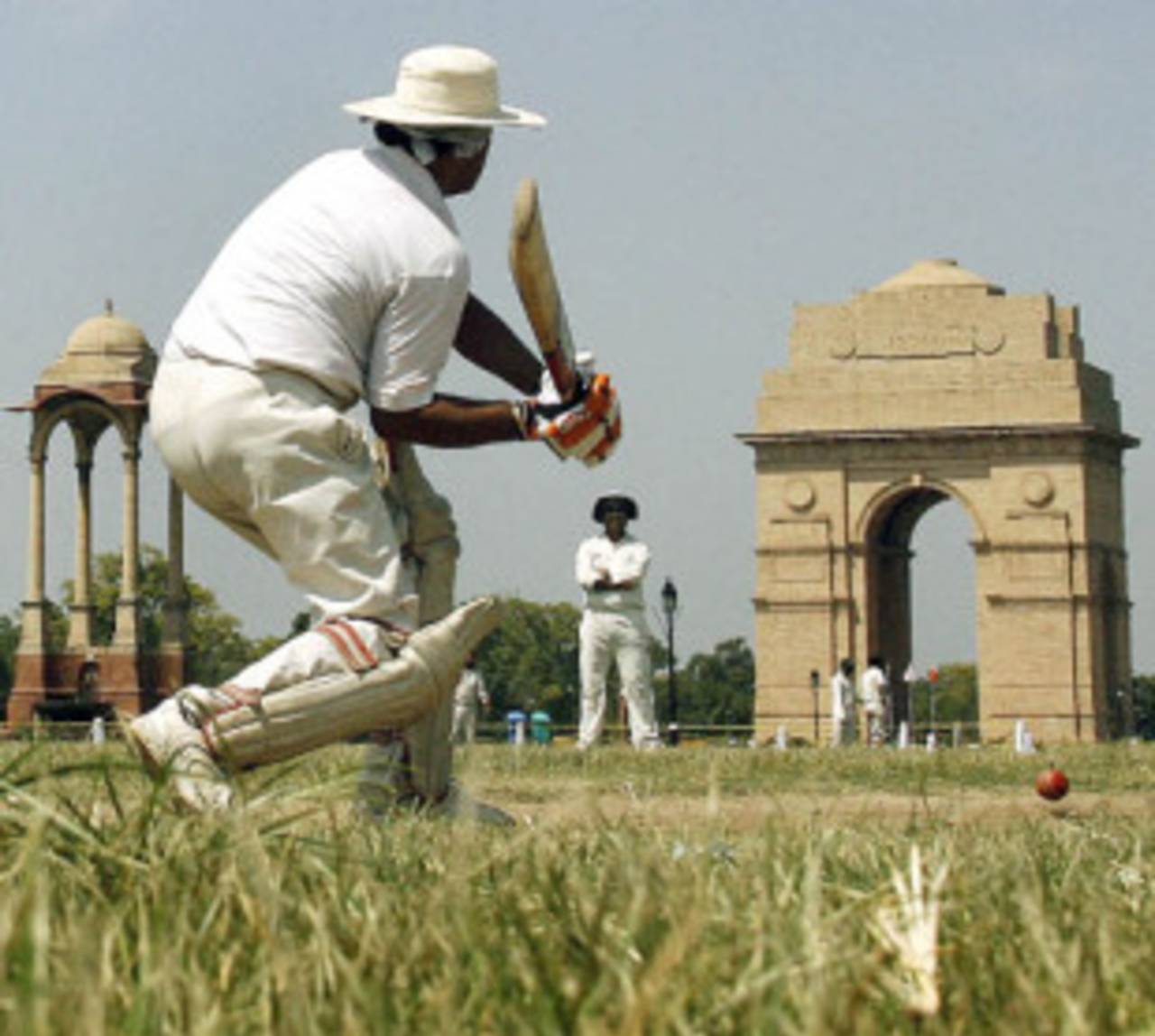Braving the Indian summer
Cricket fans not from the subcontinent come to realize - eventually - that cricket is most certainly not the summer game in the Indian subcontinent
Samir Chopra
25-Feb-2013

But the blistering heat of the Indian summer, and in particular that of the tandoori oven named New Delhi, never brought a complete halt to the playing of the game by youngsters • AFP
Cricket fans not from the subcontinent come to realize - in the course of their cricket education - that cricket is most certainly not the summer game in the Indian subcontinent. It is the winter game. The modern extension of the cricket calendar has meant, of course, that more cricket is played at more times outside the traditional season than ever before but in years gone by cricket remained confined to the cooler parts of the year. The reasons for that should be crystal clear to anyone who has suffered through an Indian summer.
But the blistering heat of the Indian summer, and in particular that of the tandoori oven named New Delhi, never brought a complete halt to the playing of the game by youngsters. We just had to be a little more resourceful in finding appropriate timeslots and in evading the restrictions placed on us by parents concerned about possible heatstroke.
One perfect opportunity to play cricket, especially during the summer vacation, was early in the mornings. Delhi summers sent the temperatures soaring into the high 30s by 8AM, so the virtues of early rising, even if steadfastly ignored when its consequence meant successful school-bus catching, were rapidly internalised when it came to cricket-ball catching. Barely had one's eyes greeted the morn, that the race was on to get to the local park to stake out a pitch before competing teams showed up. The morning games were brought to a close by several factors: the sun, parents calling their wards back into the safety of their homes, back to alternative vacation day plans.
Bizarrely enough, none of us ever remembered to bring water bottles to these games; instead, we drank from nearby taps, and sometimes dunked our heads in the streams of water that were occasionally available from pipes laid out to water the park's flower beds. (These waterlogged beasts often gave our cricket balls a good soaking as well.)
The Delhi afternoon, unsurprisingly, defeated even the most enthusiastic amongst us. 45 degree heat seemed a little too forbidding, and besides, as already indicated, the elders of the community frowned on such reckless exposure to the elements. Included in these was the dreaded loo, that notorious hot and dry wind responsible for hundreds of deaths every Indian summer. (In Shame, Salman Rushdie described it as "that hot afternoon breath-that-chokes.")
But the evenings lay ahead. And so we waited, for a dip in the temperature, before racing out again to squeeze in a game or two before darkness closed in. Our desire to prolong these encounters often resulted in farcical finishes, which resembled nothing quite as much as the 2007 World Cup final. No one, it seemed, ever wanted to bring an evening game to a close.
The surfaces we played on began the summers promisingly; they had received a few showers during the winters, grown a few blades of grass, softened a little. But as the summers wore on, the grass was scorched, the grounds baked, the dust flaked, and ridges, grooves, and scars appeared. By the time the monsoons rolled around, we were, I'm sad to say, playing on those proverbial subcontinental dustbowls so beloved of cliche-loving journalists the world over.
The monsoons destroyed our grounds, drove us back indoors, and made us dream, even more vividly, and anticipate, with even greater fervor, the coming of the autumn, the festival season, and then, the winter, when international cricket would begin again, giants would stalk the land, and we could go back to emulating them, in our fantasies, and even in the parks, now suddenly greener and more inviting than ever.
Samir Chopra lives in Brooklyn and teaches Philosophy at the City University of New York. He tweets here